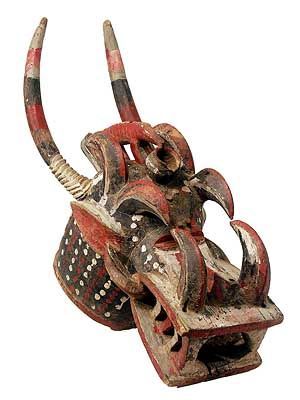#senufo
Explore tagged Tumblr posts
Text

Senufo village in Ivory Coast
French vintage postcard
#postcard#ansichtskarte#briefkaart#photography#carte postale#vintage#ivory#postkarte#photo#historic#postkaart#ephemera#postal#sepia#ivory coast#village#coast#french#tarjeta#senufo
8 notes
·
View notes
Text


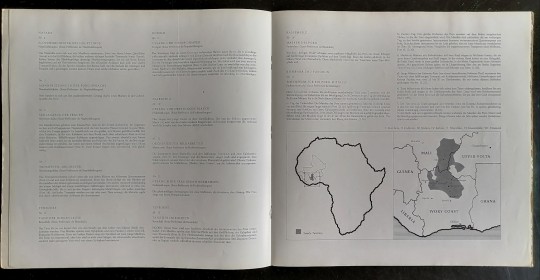

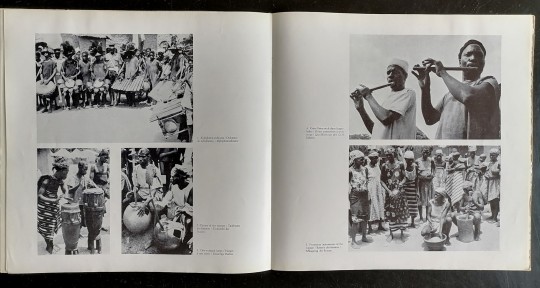
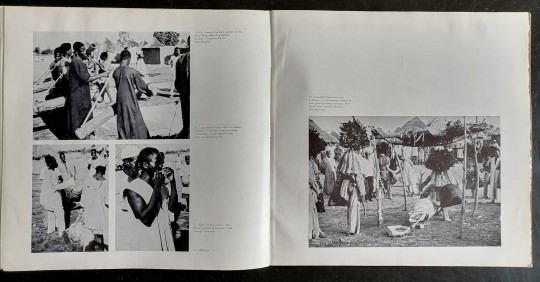

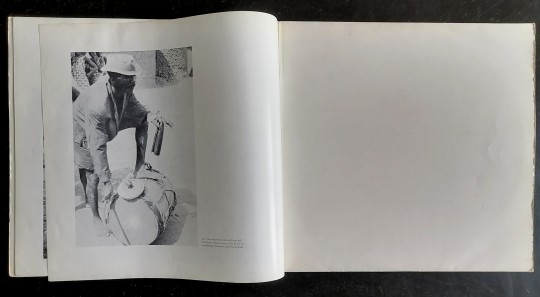
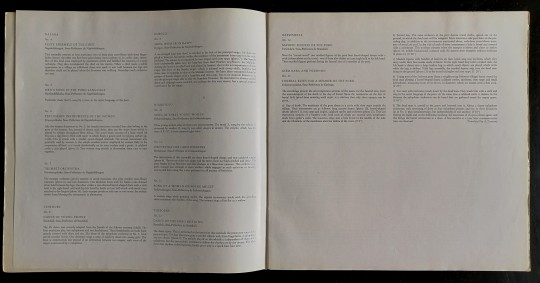

[rec. Hugo ZEMP]
"An Anthology of African Music, vol.8 : The Music of the Senufo"
(LP. Bärenreiter-Musicaphon. ? / rec. 1962/65) [ML/CI/BF]
youtube
#hugo zemp#1965#africa#mali#ivory coast#burkina faso#traditional#folk#musicology#ethnomusicology#senufo#records#Youtube
21 notes
·
View notes
Text
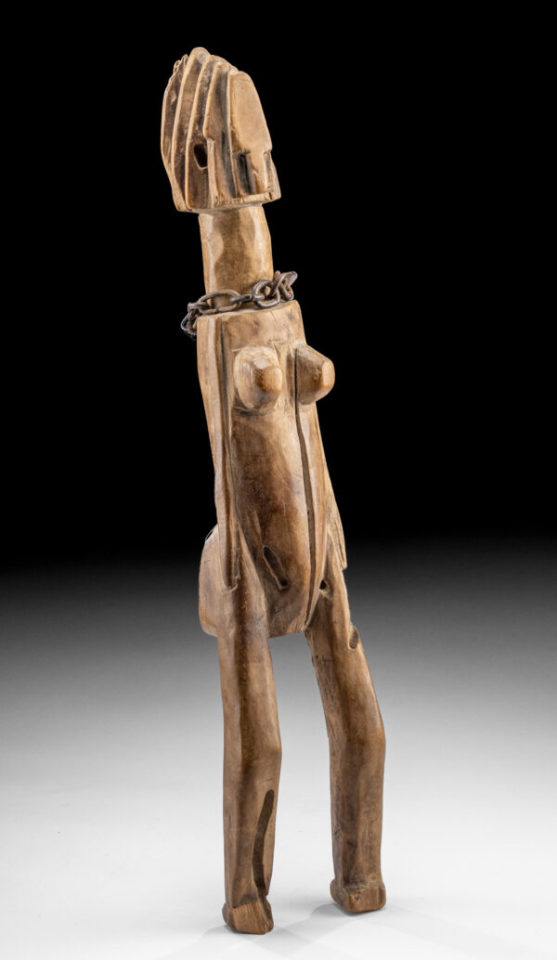
Female figure symbolizing the primordial couple from the Senufo people, late 1800s-1950s, Ivory Coast, West Africa.
18 notes
·
View notes
Text
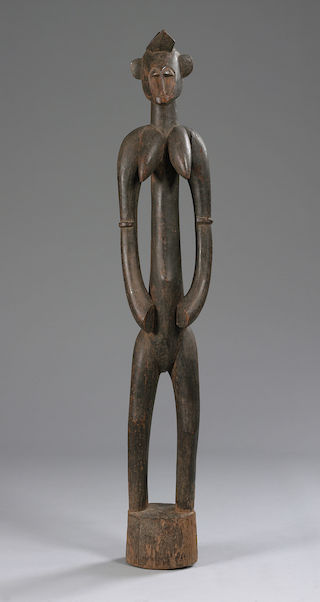
UNRECORDED SENUFO ARTIST
Female figure ("pombia")
37 notes
·
View notes
Text
#TurtleTuesday:
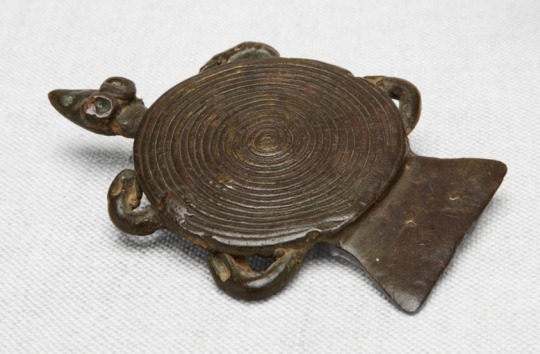
Pendant depicting a tortoise Senufo culture, Côte d’Ivoire or Burkina Faso Early/mid–20th century Copper alloy, H.: 5.1 cm (2 in.) Art Institute of Chicago 2006.121
"Ornaments made of copper alloys are generally commissioned by individuals on the recommendation of a diviner as a means to encourage spiritual intervention in the resolution of individual problems or goals. This ornament is in the form of a turtle - an animal thought by the Senufo to have special ties to the spiritual world. The large round eyes and circular feet add emphasis to the neatly coiled rings of the turtle’s body. The flat, broad tail looks more like that of a fish than a turtle, but it probably made the object easier to grasp."
#Turtle Tuesday#turtle#tortoise#African art#Senufo art#copper#metalwork#ornament#Art Institute of Chicago#animals in art#20th century art
15 notes
·
View notes
Text

Nursing Woman with Child 1800s-1900s Africa, West Africa, Côte d'Ivoire, reportedly Korhogo area, Senufo-style carver
Cleveland Museum of Art
57 notes
·
View notes
Text

Diverse African Cultures and Beliefs about Life After Death
Introduction
Africa is a continent rich in cultural diversity and traditions, and this extends to its beliefs about life after death. Across the vast expanse of Africa, there are numerous cultures, each with its own unique perspective on what happens when life on Earth comes to an end. In this article, we will explore some of the fascinating beliefs about life after death that are deeply ingrained in African societies.
1. The Ancestor Veneration of the Akan People (Ghana and Ivory Coast)
In Akan culture, which encompasses the Ashanti, Fante, and Akuapem people, ancestors hold a significant place in the spiritual realm. They believe that after death, the souls of the departed continue to exist and influence the lives of their living descendants. Ancestor veneration involves rituals, offerings, and prayers to keep these spirits content and receive guidance and protection from them.
2. The Reincarnation Belief of the Yoruba People (Nigeria, Benin, and Togo)
The Yoruba people have a belief in reincarnation, where it is thought that the soul of a deceased person is reborn into a new body. The deceased's name may even be given to the newborn as a way of connecting the past and present lives. The Yoruba also believe that the deceased can communicate with the living in dreams and visions.
3. The Eternal Journey in Ancient Egyptian Culture (Egypt)
Ancient Egypt is renowned for its elaborate beliefs about the afterlife. Egyptians believed in a complex journey after death, where the soul faced trials and judgment before reaching the eternal paradise known as the "Field of Reeds." To ensure a successful afterlife, elaborate burial rituals and tombs were constructed, including the famous pyramids.
4. The Importance of Ancestral Connection in Zulu Beliefs (South Africa)
Among the Zulu people, the connection to ancestors is deeply cherished. It is believed that after death, the ancestors continue to play a role in the lives of their descendants. Rituals such as sacrifices and ceremonies are performed to honor and seek guidance from these ancestral spirits. Displeasing the ancestors can bring misfortune, while pleasing them can bring blessings.
5. The Dualistic Beliefs of the Dogon People (Mali)
The Dogon people have a dualistic belief system. They believe that after death, one's soul splits into two parts: one part goes to the ancestral realm, while the other is reincarnated into a new being. This complex system reflects the Dogon's spiritual connection to both their ancestors and the cycle of life.
6. The Spiritual Transition in the Akan-Bono Culture (Ghana)
The Akan-Bono people have a unique belief in the transitional phase after death. It is believed that after a person dies, their soul goes through a period of adjustment before joining the ancestors in the spiritual realm. During this time, the soul is thought to revisit important places and people from their earthly life.:
7. The Burial Rituals of the Senufo People (Ivory Coast, Mali, and Burkina Faso)
Among the Senufo people, the transition from life to the afterlife is marked by elaborate burial rituals. They believe that after death, the deceased's spirit lingers in the vicinity of their burial site. Special ceremonies and sacrifices are conducted to ensure a peaceful journey for the departed and to maintain a connection between the living and the deceased.
8. The Concept of the "Underworld" in San/Bushmen Beliefs (Southern Africa)
The San people, also known as Bushmen, have a belief in an underworld inhabited by spirits. After death, the souls of the departed are thought to travel to this underworld, which is considered a realm of ancestral spirits. The San people often use trance dance rituals to communicate with these spirits and seek guidance.
9. The Immortality Belief of the Himba People (Namibia)
The Himba people hold a belief that the spirits of their ancestors are immortal and continue to watch over the living. They also believe in reincarnation, where the spirit of a deceased person can be reborn into a new child within the same family. This belief reinforces the strong bond between generations.
10. The Role of Dreams in Khoikhoi Beliefs (South Africa)
The Khoikhoi people place great importance on dreams as a means of communication with the deceased. It is believed that dreams can provide insights, warnings, or messages from the spirit world. Special rituals are performed to interpret dreams and receive guidance from ancestors.
11. The Journey to the "Land of the Dead" in Dinka Culture (South Sudan)
Among the Dinka people, the journey to the afterlife is seen as a migration to the "Land of the Dead." They believe that the deceased will join their ancestors in this realm, where they can continue their pastoral lifestyle. Special rites and ceremonies are conducted to facilitate this transition.
12. The Symbolism of the Baobab Tree in Many African Beliefs
Across various African cultures, the mighty baobab tree is often associated with the afterlife. It is believed that these ancient trees serve as a link between the earthly realm and the world of spirits. Many cultures bury their deceased near baobab trees, believing that the tree's roots connect with the spirits below.
Conclusion
The intricate beliefs about life after death in Africa reflect the continent's cultural richness and diversity. From ancestor veneration to reincarnation, from underworld journeys to dream communication, these beliefs offer a glimpse into the deep spiritual connections that African societies maintain with their departed loved ones. Each culture's unique perspective contributes to the fascinating mosaic of African spirituality and traditions.
#life#animals#culture#aesthetic#black history#history#blm blacklivesmatter#anime and manga#architecture#black community
204 notes
·
View notes
Text

“A Senufo woman carrying a jar on her head, Ivory Coast.” c.2016
Photo by: DeAgostini
15 notes
·
View notes
Text


African Vintage Senufo Hornbill Sculpture, Ivory Coast. Carved and polychromed wood.
Material Culture
25 notes
·
View notes
Text



ANGST HASE PFEFFER NASE [Chris COOPER]
"Seashard"
(LP. Senufo Editions. 2011 / rec. 2010) [US]
6 notes
·
View notes
Text

Senufo healer's "ring of silence" in the form of a buffalo, worn as a status symbol, 1900s-1950s, Burkina Faso or Ivory Coast.
33 notes
·
View notes
Text
(the actual museum entry specifies that it's from cote d'ivoire, in the senufo style, and originates from *before* 1975 (presumably acquired then, with no more precise techniques for dating). from a quick google, the senufo have had bronze casting from before european contact. so could be quite a bit older!)
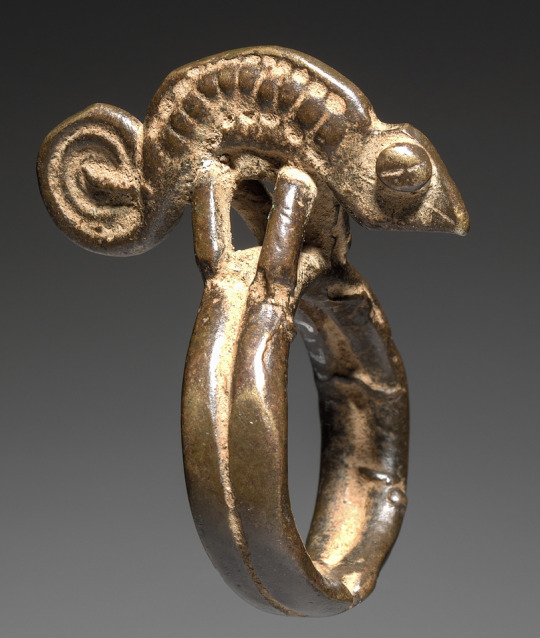
ring, west africa c. 1975.
4K notes
·
View notes
Text
"African Senufo Korhogo Tribal Ethnic Art" Classic T-Shirt for Sale by BluedarkArt | Redbubble

0 notes
Text
For a belated #WorldLizardDay 🦎:



Rings Depicting Chameleons
c. 19th/mid-20th century
Senufo, Côte d’Ivoire or Burkina Faso
copper alloy
The Art Institute of Chicago
https://www.artic.edu/artworks/193108/ring-depicting-a-chameleon
https://www.artic.edu/artworks/192683/ring-depicting-a-chameleon
https://www.artic.edu/artworks/193109/ring-depicting-a-chameleon
"Small cast copper-alloy ornaments are made across West Africa within the arc of the great Niger River. Brass or bronze casting has powerful associations with the supernatural because, like ironworking, it is a highly specialized process that uses fire to transform a raw material into a form that is useful and meaningful to humans. For the Senufo, copper-alloy ornaments are pleasing to the eye and offer protection by representing and honoring nature spirits." [AIC]
#animals in art#World Lizard Day#lizard#chameleon#ring#jewelry#jewellry#copper#metalwork#Att Institute of Chicago#animal holiday#African art
89 notes
·
View notes


